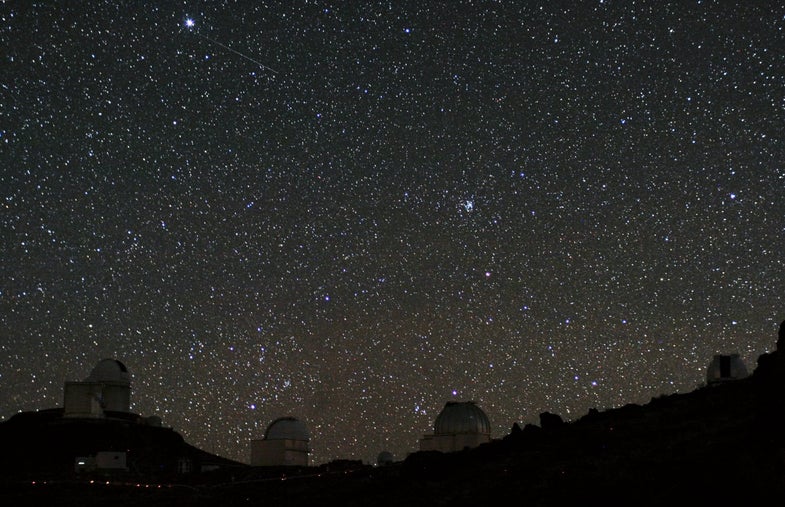Aliens Might Just Not Exist Yet
Earth life: an early arrival at the party

The world is in a tizzy over the mysterious fluctuations astronomers are seeing in light from a distant star. While those variations could turn out to have a perfectly non-alien explanation, the excitement over them shows just how badly we want there to be other civilizations in the universe.
Now, a study published this week in Monthly Notices of the Royal Astronomical Society, suggests that our loneliness is only temporary. If human civilization manages to hang on for several billion years (unlikely, but we’re an optimistic bunch) then we might just see other planets with other civilizations.
The researchers, from NASA’s Space Telescope Science Institute (STScI), looked at the data from telescopes like the Hubble and Kepler to get a better idea of how galaxies, planets and solar systems form. Using those observations and computer models, they calculated that Earth is only in the first 8 percent of all Earth-like planets that will ever form. That’s right, 92 percent of Earth-like (a.k.a. habitable, with liquid water on the surface) planets haven’t even been formed yet.
“Our main motivation was understanding the Earth’s place in the context of the rest of the universe,” author Peter Behroozi said in a statement “Compared to all the planets that will ever form in the universe, the Earth is actually quite early.”
Because it is so early, the researchers think it is highly unlikely that we are the only planet that will ever develop intelligent life. In the paper, Behroozi and his co-author, Molly Peeples, write, “assuming that gas cooling and star formation continues, the Earth formed before 92% of similar planets that the Universe will form. This implies a < 8% chance that we are the only civilisation the Universe will ever have."
Those are pretty good odds that we aren’t alone. We might just need some patience to finally make first contact.